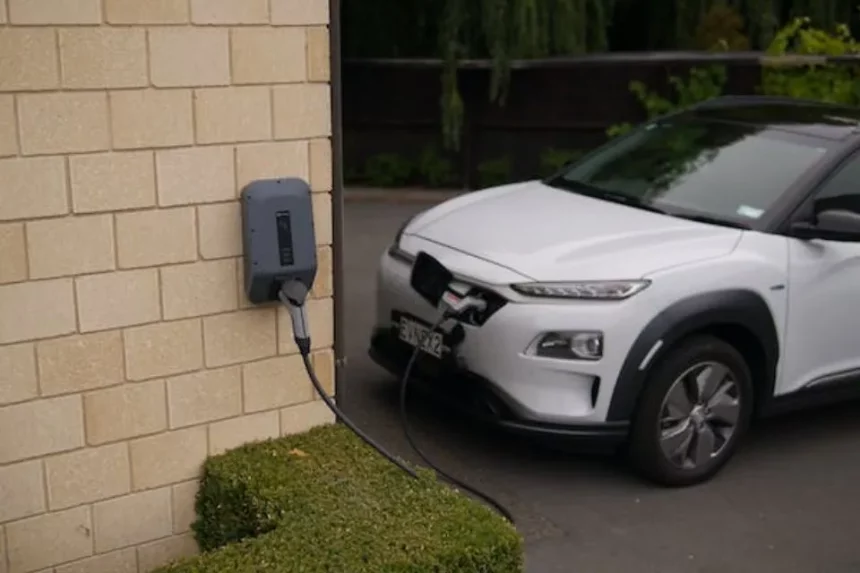In the fast-paced world of constant innovation, the automotive industry is no exception when it comes to embracing cutting-edge technology. The Tech-Savvy Highway is a thrilling joyride through the transformative advancements that have taken the wheels and are driving full speed ahead in redefining the way we experience automobiles. From electric vehicles and autonomous driving to connected cars and advanced safety features, the modern automobile is more than just a mode of transportation – it’s a dynamic fusion of intelligent engineering and seamless connectivity. These groundbreaking technologies have not only intensified the competition among industry giants but also captivated the imagination of drivers around the globe. So, buckle up and get ready to explore how these modern marvels are reshaping the auto industry, steering us towards a more efficient, sustainable, and exhilarating future on the road.
The Impact of Electric Vehicles on the Auto Industry
The exponential growth of the electric vehicle (EV) market has been nothing short of electrifying, and its impact on the auto industry is undeniable. In recent years, the demand for EVs has surged, driven by a growing global consciousness towards sustainability, stricter emission regulations, and technological advancements in battery performance. This shift in consumer preference has forced automakers to rethink their strategies, with many investing heavily in the development of electric powertrains and setting ambitious targets for their EV line-ups.
The rise of EVs has also triggered a paradigm shift in the traditional supply chain, as automakers and suppliers adapt to the changing landscape. With electric vehicles requiring fewer mechanical components compared to their internal combustion engine (ICE) counterparts, manufacturers have had to reevaluate their production processes and transition towards embracing new materials, such as advanced batteries, electric motors, and power electronics. This has led to a wave of innovation and collaboration, particularly in the battery technology sector, where companies are racing to develop more efficient, lightweight, and affordable battery solutions.
As the EV market continues to gain momentum, the auto industry is also witnessing the emergence of new players and partnerships, challenging the dominance of established automakers. From startups like Tesla and Rivian to technology giants like Apple and Google, the race to develop cutting-edge electric vehicles has intensified competition and spurred innovation. Furthermore, the widespread adoption of electric vehicles has paved the way for the development of a robust charging infrastructure, creating new business opportunities and collaborations between automakers, utilities, and governments. In essence, the electrification of the automobile has set the stage for a new era of sustainable mobility, transforming the auto industry as we know it.
Connectivity and In-Car Infotainment Systems
The modern automobile is no longer just a means of transportation; it has evolved into a connected hub of information, entertainment, and communication. As consumers become increasingly dependent on their smartphones and other digital devices, the demand for seamless connectivity in vehicles has grown significantly. This has led to the development of advanced in-car infotainment systems that not only provide drivers and passengers with access to music, navigation, and communication services, but also integrate smart technologies, such as voice recognition, gesture control, and artificial intelligence (AI).
One of the most significant developments in this realm has been the integration of smartphones with vehicle infotainment systems through technologies like Apple CarPlay and Android Auto. These platforms allow drivers to access their favorite apps and services on the vehicle’s display, making it easier and safer to use their smartphones while driving. In addition, automakers have also started to incorporate advanced connectivity features, such as Wi-Fi hotspots, over-the-air (OTA) software updates, and vehicle-to-everything (V2X) communication, enhancing the driving experience and paving the way for the development of autonomous vehicles.
The convergence of automotive and consumer electronics has also given rise to new business models and partnerships between automakers, tech companies, and content providers. For instance, the rise of streaming services like Spotify and Netflix has led to the integration of these platforms into in-car infotainment systems, providing passengers with access to their favorite music, movies, and TV shows on the go. As the demand for connected services continues to grow, automakers are increasingly collaborating with technology companies to develop innovative solutions that cater to the evolving needs and preferences of consumers, further blurring the lines between the automotive and tech industries.
How 3D Printing is Shaping the Future of Car Manufacturing
3D printing, or additive manufacturing, has emerged as a groundbreaking technology that is revolutionizing the way products are designed, manufactured, and distributed. In the automotive industry, 3D printing has the potential to transform every aspect of the manufacturing process, from prototyping and production to customization and spare parts logistics. By enabling manufacturers to create complex geometries and lightweight components, 3D printing offers significant advantages in terms of design flexibility, material efficiency, and reduced production lead times.
One of the most promising applications of 3D printing in the automotive industry is rapid prototyping. By using 3D printing technology, automakers can quickly and cost-effectively create prototypes for new vehicle designs, allowing them to test and iterate on their concepts with greater speed and precision. This not only accelerates the product development cycle but also enables manufacturers to explore new design possibilities and make more informed decisions about their final products.
In addition to prototyping, 3D printing is also being used to produce end-use components for vehicles, particularly in the area of lightweighting and customization. By leveraging the design freedom offered by additive manufacturing, automakers can create intricate structures and lattice geometries that optimize material usage and reduce the weight of vehicle components. This not only improves fuel efficiency and performance but also contributes to a more sustainable manufacturing process. Furthermore, the ability to print customized parts on-demand has led to the emergence of new business models, such as localized production and digital inventories, which have the potential to disrupt traditional supply chains and logistics in the automotive industry.
As 3D printing technology continues to advance and mature, the automotive industry is poised to reap the benefits of this innovative manufacturing process. By embracing additive manufacturing, automakers can not only streamline their production processes and reduce costs but also drive innovation and create more sustainable, personalized, and efficient vehicles for the future.
The Evolving Role of Cybersecurity in the Automotive World
As automobiles become increasingly interconnected and technologically advanced, the need for robust cybersecurity measures has never been more critical. Today’s vehicles are equipped with an array of electronic control units (ECUs) and sensors that communicate with each other through complex networks, making them vulnerable to cyberattacks. In recent years, high-profile hacks and security breaches have highlighted the potential risks associated with connected vehicles, prompting automakers, suppliers, and governments to take action and invest in the development of advanced cybersecurity solutions.
One of the key challenges in securing connected vehicles is the sheer complexity of the automotive ecosystem, which involves numerous stakeholders, such as OEMs, Tier 1 suppliers, software providers, and aftermarket suppliers. This has led to the establishment of industry-wide initiatives, such as the Automotive Information Sharing and Analysis Center (Auto-ISAC), which aims to facilitate collaboration and information sharing among stakeholders to identify and mitigate cybersecurity threats. In addition, regulatory bodies and standardization organizations are working on developing cybersecurity guidelines and best practices to ensure the safety and security of connected vehicles and their occupants.
In response to the growing threat landscape, automakers and suppliers are increasingly integrating advanced security features, such as hardware-based security solutions, intrusion detection and prevention systems (IDPS), and secure over-the-air (OTA) software updates. Moreover, the development of new technologies, such as artificial intelligence (AI) and machine learning, is enabling the creation of more sophisticated cybersecurity solutions that can dynamically adapt to emerging threats and vulnerabilities. As the automotive industry continues to embrace connectivity and automation, the role of cybersecurity will only become more critical in ensuring the safety, privacy, and trust of consumers on the Tech-Savvy Highway.
Conclusion: Embracing the Future of the Automotive Industry
The automotive industry is undergoing a radical transformation, fueled by the rapid advancements in technology and the shifting preferences of consumers. From the rise of electric vehicles and connected cars to the integration of 3D printing and cybersecurity, the modern automobile is a testament to the power of innovation in shaping the future of mobility. As we navigate the Tech-Savvy Highway, it is essential for automakers, suppliers, and governments to work together and embrace these emerging technologies, not only to stay competitive but also to create a more efficient, sustainable, and exhilarating driving experience for all.
The road ahead is filled with challenges and uncertainties, but it also presents incredible opportunities for growth and collaboration. By fostering a culture of innovation and adopting a forward-looking approach, the automotive industry can continue to evolve and thrive in this ever-changing landscape. As we embark on this exciting journey, let us remember that the ultimate goal is not just to create sophisticated machines, but to enrich the lives of drivers and passengers, making every trip on the Tech-Savvy Highway a memorable and enjoyable experience.



